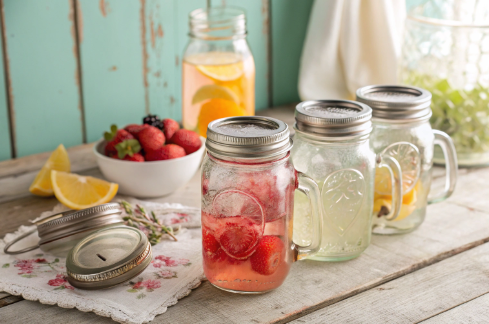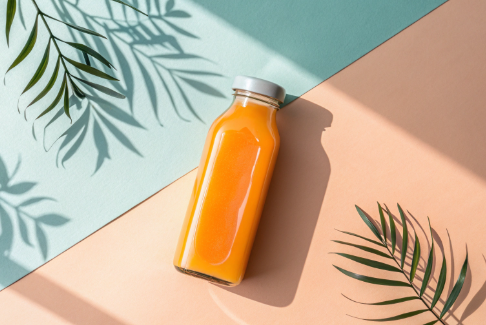Mason jars have become an iconic symbol of food preservation, sustainability, and creative living. From their invention in the 19th century to their modern-day uses,Mason jarshave evolved far beyond simple glass containers. This article provides an in-depth exploration of Mason jars — their history, design, varieties, uses, manufacturing process, sustainability, market trends, and why PauPack (www.paupacking.com) is your trusted partner for high-quality Mason jars and glass packaging solutions.
1. Introduction to Mason Jars
AMason jaris a glass jar used primarily for home canning and food preservation. It features a screw-threaded neck and a metal lid with a rubber sealing surface that creates an airtight seal, preventing spoilage and extending the shelf life of preserved foods. The design was revolutionary in the 19th century and remains popular today not only for canning but also for storage, decoration, and even beverage service.
2. History and Origin
TheMason jarwas invented and patented in 1858 by John Landis Mason, a tinsmith from Vineland, New Jersey. His patent (U.S. Patent No. 22,186) introduced a screw-threaded glass jar with a metal lid that screwed down onto a rubber ring on the jar’s shoulder, creating an airtight seal. This innovation was a significant improvement over previous food preservation methods such as drying, smoking, or salting, which were less reliable and more cumbersome.
Initially, the lids were made from zinc with milk-glass liners to prevent food contamination. Over time, improvements led to the modern two-piece metal lid system with a separate metal band and a rubber or silicone sealing gasket, introduced by Alexander Kerr in the early 20th century. After Mason’s patent expired, many manufacturers began producing Mason-style jars, leading to hundreds of variations in shape, size, and lid design.
Mason’s invention had a profound impact on food security and home economics, allowing urban and rural families alike to preserve garden produce, fruits, vegetables, and homemade jams safely for winter use. The Ball Corporation, founded in 1884, became one of the most prominent manufacturers of Mason jars, and their designs remain widely recognized today.
3. Design and Features of Mason Jars
3.1 Structure
-
Glass Body: Made from soda-lime glass, which is heat-resistant and durable.
-
Screw-Threaded Neck: Allows the metal lid to screw on securely.
-
Two-Piece Lid: Consists of a flat metal lid with a rubber or silicone sealing surface and a metal screw band that holds the lid in place during processing.
-
Rubber/Silicone Gasket: Ensures an airtight seal to prevent microbial contamination.
3.2 Sizes and Mouth Types
Mason jars come in various sizes and mouth diameters to suit different needs:
| Size (Ounces) | Common Name | Mouth Diameter | Typical Uses |
|---|---|---|---|
| 2 oz | Mini Mason Jar | Regular (2.5") | Spices, party favors, cosmetics |
| 4 oz | Quarter Pint/Jelly | Regular (2.5") | Jams, jellies, small condiments |
| 8 oz | Half Pint | Regular (2.5") | Preserves, sauces |
| 16 oz | Pint | Regular/Wide | Pickling, storage |
| 32 oz | Quart | Regular/Wide | Large food storage, fermenting |
| 64 oz | Half Gallon | Wide (3") | Bulk storage, beverages |
-
Regular Mouth: Approximately 2.5 inches in diameter, easier for pouring liquids.
-
Wide Mouth: Approximately 3 inches in diameter, easier for filling and cleaning, ideal for pickling and larger solids.
3.3 Variations
-
Heritage Collections: Colored glass jars (blue, green) for decorative and collectible purposes.
-
Mason Jar Mugs: Jars with handles designed for beverages.
-
Specialty Jars: Embossed or uniquely shaped jars for crafts, candles, or gifts.
4. Manufacturing Process
Mason jarsare primarily made from soda-lime glass, which is composed of three main raw materials:
-
Silica (Quartz Sand): The main component, providing transparency and structure.
-
Soda (Sodium Carbonate): Lowers the melting point of silica.
-
Lime (Calcium Oxide): Adds chemical durability.
These materials are mined, processed, and transported to glass factories. At the factory, they are mixed and melted in furnaces reaching temperatures up to 1600°C. The molten glass is then molded into jars by automated machines. The metal lids are manufactured separately from stainless steel and coated with food-safe linings and silicone or rubber gaskets to ensure airtight sealing.
After production, jars and lids undergo quality control, packaging, and are shipped worldwide.Mason jarsare reusable and recyclable; glass can be melted and reformed multiple times without degradation, making Mason jars a sustainable packaging choice.
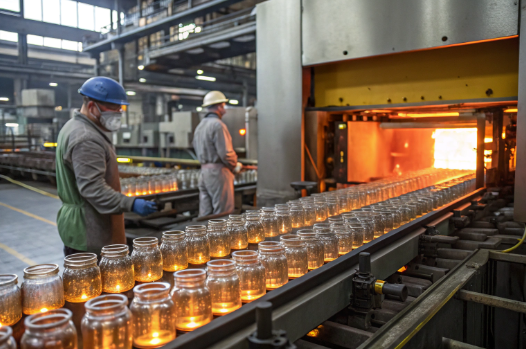
5. Practical Uses of Mason Jars
5.1 Food Preservation and Storage
The original and most common use ofMason jarsis home canning and preserving foods such as fruits, vegetables, jams, jellies, sauces, and pickles. The airtight seal prevents spoilage and contamination, allowing food to be stored safely for months or even years without refrigeration.
5.2 Freezing and Refrigeration
Mason jarscan be used to freeze food, but care must be taken to leave headspace for expansion to avoid glass breakage. Jars with straight sides are preferred for freezing as they handle expansion better than jars with curved shoulders.
5.3 Microwave and Oven Use
WhileMason jarsare heat-resistant, they are not designed for direct oven use unless specified by the manufacturer. Microwaving is possible but requires removing the metal lid and avoiding sudden temperature changes to prevent cracking.
5.4 Creative and Decorative Uses
Mason jarsare popular for DIY crafts, including:
-
Candle holders and lanterns
-
Flower vases
-
Storage for office supplies, beads, or sewing materials
-
Rustic drinkware for cocktails and beverages
-
Layered salads or overnight oats for meal prep
5.5 Eco-Friendly Lunch Containers
Using Mason jars as reusable containers for lunches and snacks reduces single-use plastic waste. Their airtight seal keeps food fresh, and their durability ensures long-term use.
6. Sustainability and Environmental Impact
GlassMason jarsare highly sustainable compared to plastic containers. Glass is made from abundant natural materials and is 100% recyclable without quality loss. Reusing Mason jars reduces waste and the carbon footprint associated with disposable packaging.
However, the silicone or rubber gaskets in the lids are not recyclable and must be disposed of properly. The metal bands are recyclable as stainless steel.
Companies like PauPack (www.paupacking.com) specialize in providing sustainable glass packaging solutions that align with global environmental goals. PauPack offers a variety of glass jars and bottles with eco-friendly designs, supporting industries such as food & beverage, cosmetics, and home goods.
7. Market Trends and Industry Outlook
The global Mason jars and canning supplies market is projected to grow significantly from USD 29.16 billion in 2025 to USD 45.18 billion by 2035, with a CAGR of 4.5%. This growth is driven by increasing consumer demand for home food preservation, eco-friendly packaging, and aesthetically pleasing storage solutions.
Manufacturers are innovating with new sizes, improved closure systems, and specialty jars to meet diverse consumer needs. The revival of home canning, driven by food security concerns and the desire for chemical-free preserved foods, has fueled this market expansion.
8. Why Choose PauPack for Your Mason Jar Needs?
PauPack (www.paupacking.com) is a leading supplier of sustainable glass packaging with over 13 years of experience serving more than 52 countries globally. PauPack offers:
-
Customizable Glass Jars and Bottles: Various shapes, sizes, and colors tailored to your product needs.
-
Sustainability Commitment: Focus on recyclable and eco-friendly materials.
-
Quality Assurance: Certified by ISO 9001, FDA, and other international standards.
-
Comprehensive Product Range: IncludingMason jars, glass bottles, pumps, sprayers, and droppers.
-
Global Logistics and Support: Efficient warehousing and after-sales service.
By partnering with PauPack, businesses can meet consumer demand for green packaging while maintaining product quality and brand appeal.
9. Mason Jar Comparison Table
| Mason Jar Type | Lid Opening Size | Typical Sizes (oz) | Common Uses | Special Features |
|---|---|---|---|---|
| Mini Mason Jar | Regular (2.5") | 2 | Spices, cosmetics, party favors | Smallest size, sometimes with handle |
| Quarter Pint/Jelly | Regular (2.5") | 4 | Jams, jellies, spices | Tall and narrow versions available |
| Half Pint | Regular (2.5") | 8 | Sauces, preserves | Standard size for small batches |
| Pint | Regular/Wide | 16 | Pickling, storage | Most versatile size, wide mouth option |
| Quart | Regular/Wide | 32 | Bulk storage, fermenting | Large size, ideal for whole fruits/veggies |
| Half Gallon | Wide (3") | 64 | Bulk storage, beverages | Largest common size, wide mouth |
| Heritage Collection | Varies | Various | Decorative, collectible | Colored glass (blue, green), embossed |
| Mason Jar Mug | Regular/Wide | 16 | Beverages | Handle for easy drinking |
| Specialty Jars | Varies | Various | Crafts, candles, gifts | Embossed, spiral, or unique shapes |
10. Conclusion
Mason jarsare timeless, multifunctional glass containers that have stood the test of time since their invention in 1858. Their airtight sealing system revolutionized food preservation and continues to serve modern needs for sustainable packaging, creative uses, and practical storage.
With the rising global emphasis on eco-friendly packaging,Mason jarsare more relevant than ever. PauPack (www.paupacking.com) offers extensive expertise and a broad product range to meet the growing demand for high-quality, sustainable glass jars and bottles worldwide.
Whether you are preserving food, organizing your pantry, creating DIY crafts, or seeking premium packaging solutions,Mason jarsremain a smart, eco-conscious choice.
For more information on Mason jars and sustainable glass packaging solutions, visit PauPack atwww.paupacking.com.




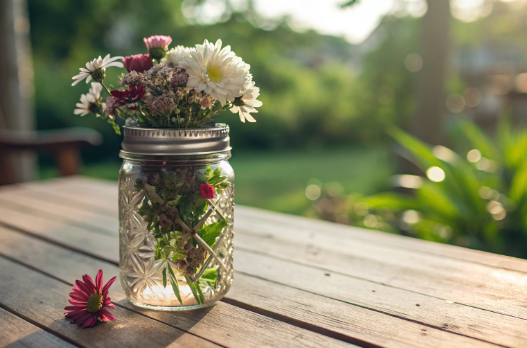
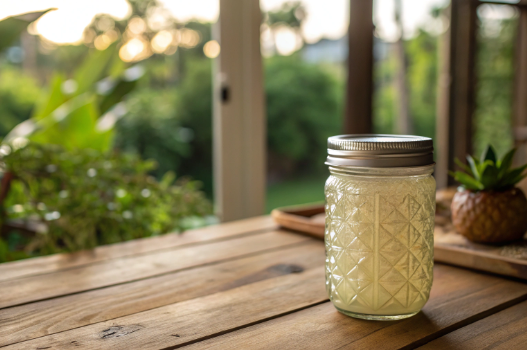

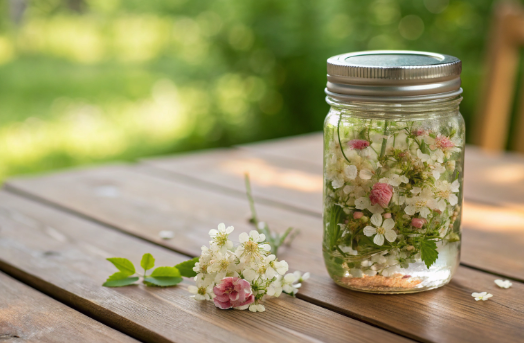



![Top 10 Leading Glass Bottle Manufacturers in the USA[2025 Updated]](https://ptwebimg.pinshop.com/i/2025/06/09/12fsh0t-3.png)
![Top 10 Leading Glass Bottle Manufacturers in the USA[2025 Updated]](https://ptwebimg.pinshop.com/i/2025/06/09/sj475b-3.png)
